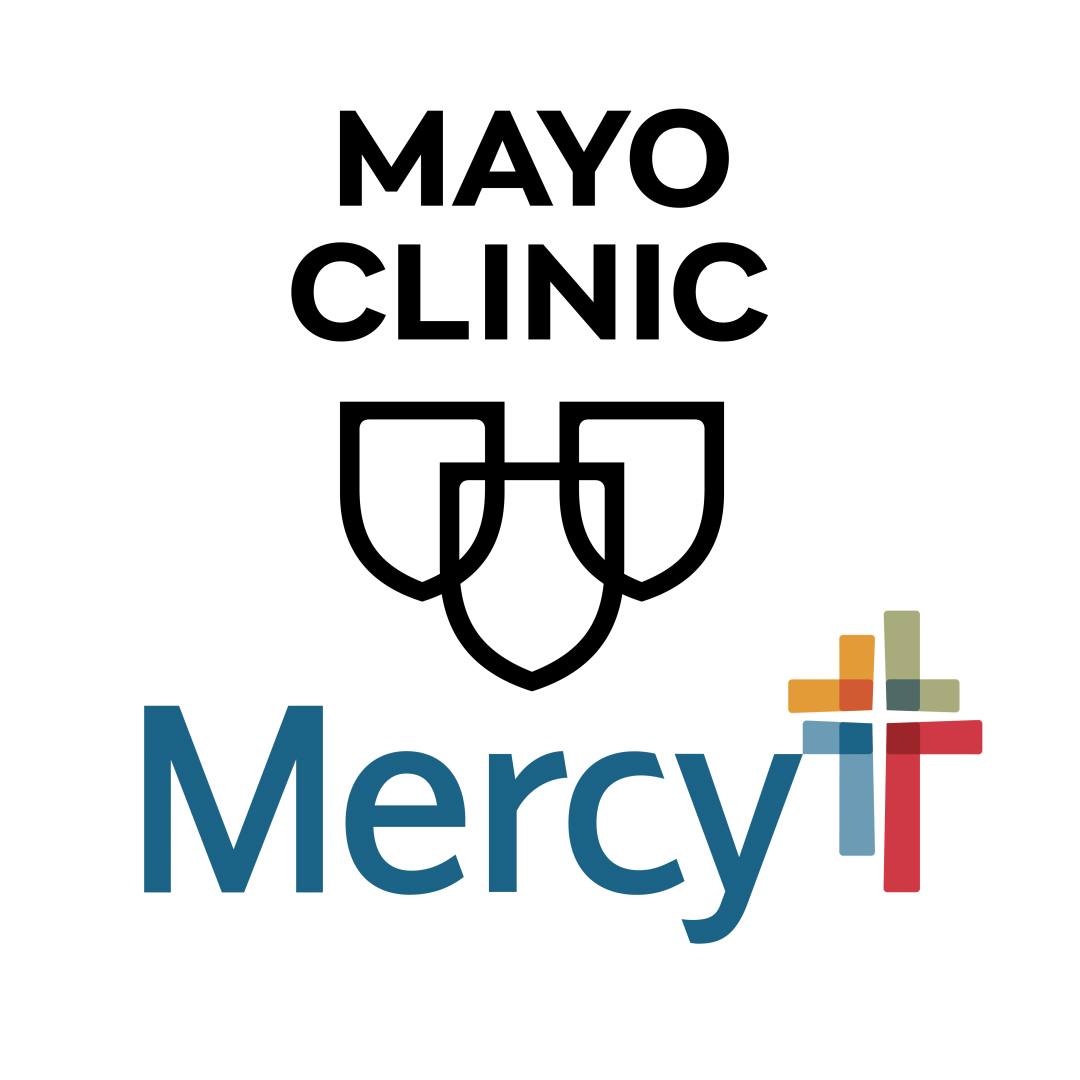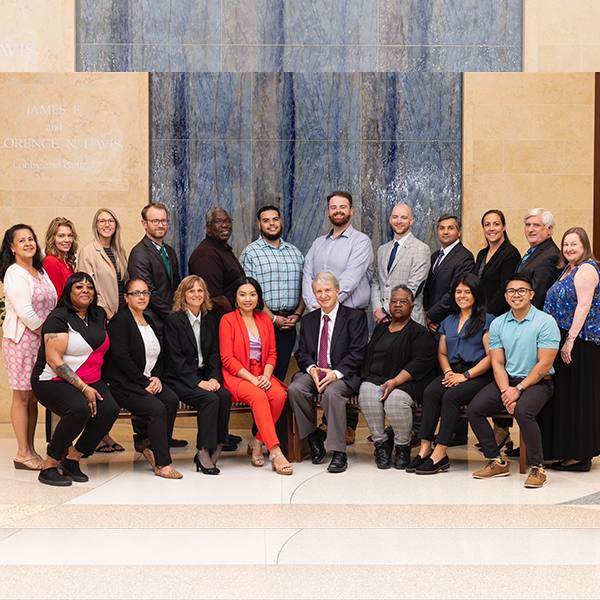-
Research
The Making of an Expert
Losing more than a dozen family members to chronic hepatitis infection, liver cancer and other liver disease motivated Essa Mohamed to get a Ph.D. from Mayo Clinic Graduate School of Biomedical Sciences and make it a daily goal to improve the lives of others. Learning that liver disease is more prevalent among Africans and Asians launched him on a mission to correct the deadly disparity.
Now after earning his degree, Dr. Mohamed is involved in research to understand liver disease and develop better ways to diagnose, treat and prevent illness. He plays a dual role as scientist and advocate trying to uncover and overcome the factors behind the disparity in liver disease in the United States and elsewhere.

"I have a vision of working at a global scale, maybe for the CDC (Centers for Disease Control and Prevention) or the World Health Organization or the Red Cross," Dr. Mohamed says. "I need to directly impact people."
Lewis R. Roberts, M.B., Ch.B., Ph.D., a Mayo gastroenterologist and hepatologist specializing in liver cancer, sees Dr. Mohamed as an emerging leader in population science and health disparities: "He could possibly carve out a niche to be the world’s expert. The skills he’s learning can be applied in many different areas."
Searching for Purpose
Born in Somalia a few months before his family moved to the United States, Mohamed grew up in Rochester, Minnesota, in the shadow of Mayo Clinic. He earned bachelor's degrees in biology, sociology and anthropology and craved a doctorate. Not feeling ready for graduate school, he enrolled in Mayo's Post-baccalaureate Research Education Program, which prepares students from underrepresented groups for a career in research.
Mohamed spent two years as an apprentice scientist in the Human and Integrative Physiology and Clinical Pharmacology Laboratory of Michael J. Joyner, M.D., who studies how the human body responds to physical and mental stresses. The experience helped him discover an intense desire to work with patients.
"We were working with human beings," he says of the lab's studies. "The problem was that all of these human beings were healthy. I want to help people who are sick."
Attending Mayo's grand rounds, a weekly forum on advances in clinical care, introduced him to a variety of medical challenges.
"This is what I want - to work with people who are affected by conditions that may not have treatments," Mohamed decided. "I want to find where there is a problem and come up with ways to mitigate it and ways to cure it."
When he learned that Dr. Roberts was conducting studies on liver disease, which had brought so much death to his family, Mohamed volunteered to help with projects.

"He's very altruistic in wanting to help others, and he was clearly motivated to make a difference with liver disease, especially in the Somali community," Dr. Roberts says.
Mohamed agrees: "My passion was ignited at Mayo."
The Liver Under Attack
Liver cancer, including bile duct cancer and gallbladder cancer, is the second-leading cause of cancer death worldwide, claiming more than 780,000 lives in 2018, according to the International Agency for Research on Cancer. Liver cancer is caused by chronic inflammatory diseases of the liver, including alcoholic cirrhosis and obesity-related fatty liver disease, and hepatitis.

Different types of hepatitis, an infection of the liver, are caused by different viruses:
- Hepatitis A is a contagious liver infection that usually spreads by consumption of fecal-contaminated food, water or close contact with an infected person or object. It is a short-term illness and can be prevented by vaccine.
- Hepatitis B is passed from person to person through blood, semen or other bodily fluids. It can become a chronic infection, especially if a person is infected at a young age. It is also preventable by vaccine.
- Hepatitis C is spread by blood and becomes a long-term, chronic infection for 70% to 85% of infected people. Chronic hepatitis C can result in long-term health problems, but the majority may not be aware of the infection.
"Hepatitis is one of those hidden illnesses that gets little attention, but it causes more deaths than HIV and about as many deaths as tuberculosis each year," Dr. Roberts says.
Gaining Expertise in Population Science
In graduate school, Dr. Mohamed chose the Ph.D. program's clinical and translational science track because it focuses on turning knowledge from the lab into improvements in patient care. For his mentor, he chose Dr. Roberts, head of Mayo's Hepatobiliary Cancer Laboratory, which studies the mechanisms that enable liver cancers to develop, grow and spread. The team also aims to develop and validate methods for early detection, diagnosis and treatment of primary liver, biliary and pancreas cancers.
“I fell in love with that group because I could do basic research and do research with patients," he says. Population science ended up being Dr. Mohamed’s perfect match. He could impact public health by identifying factors — environmental, social, economic, policy, behavioral and genetic — that influence health and developing clinical and community-based interventions to reduce risk and incidence of diseases and improve health.
To gauge the status of liver cancer, a leading cause of cancer-related death in Africa, Mohamed helped form a consortium of 21 clinics in nine African countries for a study that developed research databases and biospecimen repositories from more than 2,500 cancer patients. The team found distinct differences between patients in Egypt and those in eight other African countries.

In Egypt, the median age when diagnosed with liver cancer was 58, 76% of patients received treatment for liver cancer, and median survival was 10.9 months. In the other countries, the median age of diagnosis was 46, only 3% received treatment for liver cancer, and median survival was 2.5 months. "Urgent efforts are needed to develop health policy strategies to decrease the burden of hepatocellular carcinoma in Africa," the team wrote in an article in The Lancet: Gastroenterology & Hepatology
Examining Local Disparities
Because Minnesota is home to the nation's largest Somali population, second-largest Hmong population and third-largest Laotian population, Dr. Roberts' lab, including Dr. Mohamed, has undertaken research projects exploring the higher incidence of liver disease among these populations. As reported in the Journal of the National Medical Association, a retrospective review of Somali and non-Somali patients seen at the hepatology clinic in 2015, the team found that 15 percent of Somali patients diagnosed by Mayo Clinic with hepatitis C already had liver cancer, compared to 9 percent of non-Somali patients. Despite improved treatment, eliminating a liver biopsy and medications associated with many side effects, 19.4 percent of Somali patients diagnosed with hepatitis C declined treatment - roughly 10 times the rate at which non-Somali patients declined treatment.
For Dr. Mohamed’s thesis, which examined disparities in liver disease among African immigrants in Minnesota, he recruited patients originally from Somalia, Kenya, Ethiopian and Liberia. Dr. Mohamed collected more than 1,000 blood samples from African immigrants - enough to collaborate with the CDC on genomic sequencing, which may uncover information about specific hepatitis viruses and inherited genetic variations associated with increased risk of liver cancers.
Beyond the Liver
Dr. Mohamed completed his doctorate in July 2018 and the next month started a post-doctoral fellowship in lung physiology and biomedical engineering under the mentorship of Virend Somers, M.D., Ph.D., a cardiologist who directs the Cardiovascular Facility and the Sleep Facility in Mayo Clinic's Center for Clinical and Translational Science. His team's research focuses on possible links between sleep disorders and cardiovascular disease.
Trying to combine what he learned from Dr. Roberts with the expertise in Dr. Somers' lab, Dr. Mohamed is looking at the intersection of cardiovascular diseases, systemic inflammation and disordered breathing among Somalis and compared to other racial/ethnic groups. He also continues to work with immigrant communities to tear down barriers that contribute to health disparities.
Jon Holten, December 2019







